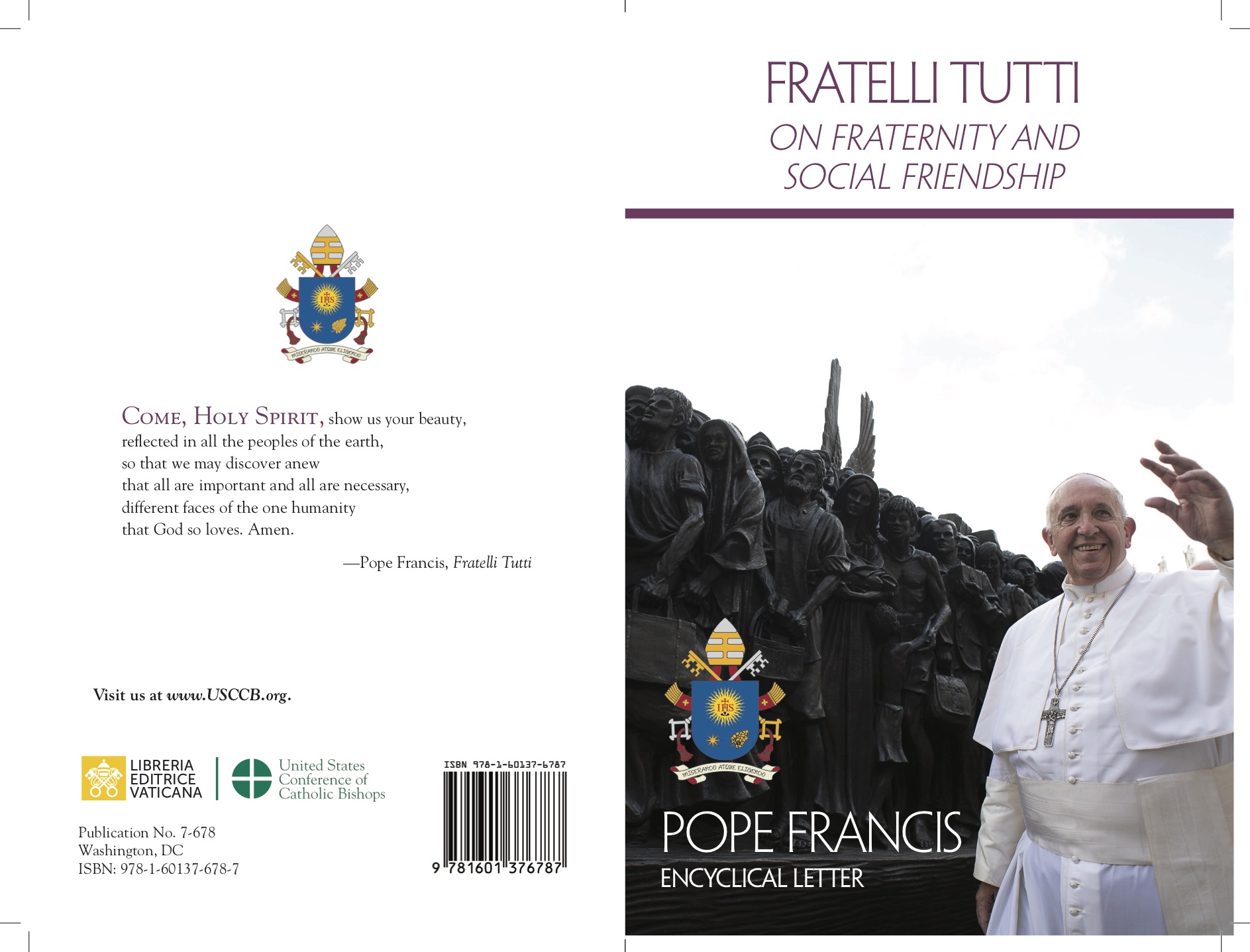
It is commonplace to link the origin of the “Jubilee” to the sound of a ram’s horn: the echo came from Jerusalem, pierced the air and leapt from village to village. The word jobel appears 27 times in the Hebrew text of the entire Old Testament: six of those times there is no doubt that it means the ram’s horn, whereas the remaining 21 times, it has to do with the jubilee year. The key reference passage is Chapter 25 of Leviticus. It is a complex text inserted in the book of the Levites, thus of priests, a ceremonial book with minute and meticulous norms that have to do with the rituals of the Temple of Jerusalem.
A philological premise
Although the term jobel resonates above all in that passage, it can also be found in Chapter 27. Instead of translating jobel as “jubilee” or year of jubilee, the ancient Greek version of the Bible, known traditionally as the Septuagint, translated it according to an interpretative standard: áphesis which in Greek means “remission”, “liberation” or even “forgiveness”. This word would become very important to Jesus because, as we will see, he does not speak about a jubilee, but rather, in Luke, he uses the Greek word, áphesis. Indeed, in the New Testament there is no mention of the word “jubilee”.
The Septuagint, the ancient translators of the Bible, thus went from an exquisitely religious, sacred fact (the celebration of the jubilee year that begins with the sound of the ram’s horn on a precise date in connection with the solemnity of Yom Kippur, the Atonement of the sin of Israel), to an ethical, moral and existential concept: the remission of debts, the liberation of the slaves (which was the content of the jubilee). The theme of the jubilee therefore moved from a liturgical language and act, to an ethical and social language and experience. This element is still relevant today, as a way of not reducing the Christian Jubilee merely to a basic celebration or ritual, but rather of transforming it into a paradigm of Christian life. Some scholars think that the term jobel is not linked to the sound of the ram’s horn but to the Jewish root jabal, which means “to postpone, to give back, to send away”. The interpretation however, seems somewhat forced, because “to send away” does not necessarily indicate liberation. It does not have the quality of the above-mentioned Greek word, áphesis, which Jesus himself used with special emphasis. Some philological attempts have offered various explanations, but it should be recognized that the starting point is a ritual fact. It presupposes the sound of the ram’s horn which marked the beginning of a special year, on the 10th day of the autumn month of Tishri, which corresponds roughly to our September-October, the month that includes Yom Kippur. It is interesting to note that in Phoenician, which in some ways is like a “distant relative” of Hebrew, the same root — jbl, the three consonants at the basis of the word jobel — indicates the “goat”, a significant part of Yom Kippur. There is therefore no doubt that the sound of the ram’s horn, its marking of sacred time, is at the root of the term “jubilee”, but we should not forget the tension that leads to the other side of the spectrum, the Greek translation: it is not only a ritual, it is an element that has to have a profound effect on the existence of a people. After this premise, let us try to gather and illustrate some of the fundamental jubilee themes which in some ways appear to be interwoven.
Rest for the land
The first rather original theme in the Bible passage is “rest” for the land. According to the rules of the Sabbath which measured time in the Bible tradition, the land was already left to rest every seven years. The rules outlined in Leviticus 25 prescribed that the land had to rest also during the year of Jubilee that followed seven weeks of years, that is, on the 50th year. The commitment may seem rather inadvisable and difficult to implement. It is possible to let the land rest for one year, especially in a civilization like that of the ancient Near East, which was much less demanding than ours, and where life was much more frugal. But to allow the land to rest for two years in a row: (the 49th sabbatical year and the 50th year of Jubilee) in an essentially agricultural economy, would have threatened survival itself. Therefore, either the Jubilee year was made to coincide with the seventh year of the seventh week, or, rather than being concretely implemented, the Jubilee was above all an omen, a utopian sign, a gaze beyond the usual way of living. To let the land rest means not to sow anything on it, nor to gather its fruits. This choice on the one hand, allows us to discover that the land is a gift because even though in smaller amounts, it still is capable of producing something. Its fruits will be more meagre, but they will not be lacking. In this way, it emphasizes that nature’s cycles do not depend on the work of man alone, but also on the Creator. It is the memory of another primacy, the transcendental one. On the other hand, during this time, one tried to go beyond private and tribal property, because everyone could take what the land offered without having to respect property boundaries and fences. In practice, it was the recognition of the universal nature of assets which meant everything was available to all. This theme can have great meaning in today’s society too. Humanity can be represented by a laden table, where on one side are those with an exaggerated accumulation of assets, while on the other side are the rest of the people, a multitude that looks on and can only enjoy the scraps and crumbs. The idea of universal access to goods, ahead of all private property, no longer exists. In this light, it is evocative to turn to Pope Francis’ reflections on the matter in his encyclical, Laudato Si’.
The remission of debts and the restitution of the land
The second theme, which is equally original, is the remission of debts and the restitution in pristinum (to the original owner) of alienated and sold lands. According to the Bible, the land was not an individual’s possession but belonged to the tribes and clan families, each of which had its own territory. It had been given during the famous partition of the land after the conquest of Canaan, as we read in Joshua (cc. 13-21). Whenever, for various reasons, a clan lost its land, one defaulted, in a certain sense, the partition wanted by God. With the jubilee, in other words, every 50 years, a map of the promised land as God had intended it was rebuilt, through the divine gift of the partition of the country among the tribes of Israel. Everyone therefore received their portion except for the tribe of Levites, who lived off contributions offered by the other tribes for their service at the Temple. The same thing would happen with debts, essentially. At the beginning of the time of the jubilee, everyone was equal with the same few possessions. Later, however, some would have lost their goods due to misfortune, others due to laziness or inability. After 50 years, one decided to return to the starting point, so that everyone was at the same level of absolute, ideal and utopian communion of property, in equality. Everything was again shared and distributed to the various tribes. Thus, each family once again obtained its property, its land and all its sons. In Deuteronomy, this social renewal is continuously suggested to the Jewish people so that they could consider it as a social model to be followed, despite the knowledge that it is an ideal project that can never be fully achieved. Indeed, in Deuteronomy we read: “But there will be no poor among you […] If there is among you a poor man, one of your brethren, in any of your towns within your land which the Lord your God gives you, you shall not harden your heart or shut your hand against your poor brother” (15:4-7). It is a choice that is not just an ideal participation in fraternity and solidarity but rather, one that entails the practicality of the “hand”, that is, of action, of concrete social commitment. Think of the profile of Jerusalem’s Christian community, in which, as Luke mentions several times in the Acts of the Apostles, “no one said that any of the things which he possessed was his own, but they had everything in common” (4:32).
Freeing the slaves
The third structural theme of the Biblical jubilee is equally incisive and demanding. The Jubilee year was the year of the remission of debts but also of the liberation of slaves. The Book of Ezekiel (46:17) speaks of the jubilee as the year of the release, of redemption, the year in which all those who had gone to service in order to survive poverty, returned to their homes, with their debts remitted and with the reappropriation of their land and their freedom. They returned to being the people of the exodus, the people liberated from the oppression of slavery and discrimination. In this case too, it was a matter of an ideal proposal, destined to create a community without bonds of abuse, without shackled feet, and capable of walking united towards a goal. It is obvious that this is also topical in our times, in which there is an endless number of forms of slavery: drug addictions, prostitution rings, exploitation of minors for labour or for sex and pornography, and many other cruel forms of subjection. One can also think of all those peoples who are practically slaves to the superpowers, because due to their debts, they are absolutely incapable of controlling their own destiny. The activities of some multinational companies are often a veritable form of economic tyranny that oppresses some nations and societies. The jubilee word of freedom thus carries great significance also for our time, including for an interior type of liberation. In fact, one can be outwardly free while being inwardly enslaved by invisible chains, for example, the social conditioning created by the mass media, by superficiality, by vulgarity, by dependence on communications. In a passage from the book of Jeremiah (34:14-17), the prophet forcefully explains Jerusalem’s and Judea’s fall and reduction to slavery at the hands of the Babylonians in 586 bc , precisely as God’s judgement of the fact that the Jews had not freed the slaves during the jubilee. Their selfishness had made it so that the great norm of freedom was not observed, and as a result, a sort of fitting punishment was applied by God who made Israel a slave.
Jesus’ Jubilee
According to the Gospel of Luke, at the beginning of his public ministry, Christ had entered into the modest synagogue of his village, Nazareth. On that Saturday, a text from Isaiah (c. 61) was being read, and it fell precisely on Jesus to proclaim it and comment on it. Through those words he introduced himself as being sent by the Father to inaugurate a perfect Jubilee to be extended throughout the following centuries, and which Christians would be expected to celebrate in spirit and in truth: “The Spirit of the Lord is upon me, because he has anointed me to preach good news to the poor. He has sent me to proclaim release to the captives and recovering of sight to the blind, to set at liberty those who are oppressed, to proclaim the acceptable year of the Lord” (Luke 4:18-19). This is the other root — in addition to the one in the Old Testament — of the Christian Jubilee. In Jesus’ words, the horizon of the Holy Year becomes the paradigm of life of the Christian, expanding and embracing all the suffering that is part of the mission of Christ and of the Church. The “acceptable year of the Lord”, that is, of his salvation, includes four fundamental gestures.
The first one is to “evangelize the poor”: the Greek verb has the word evangelo, as its root, the “good news” of the Kingdom of God. The recipients are the “poor”, the least of the world, those who do not have independent political and economic power, but who have a heart that is open to adhesion to the faith. The jubilee is destined to bring the humble, the poor and the wretched, those who outwardly and inwardly depend on the hands of God and of their brothers and sisters, to the centre of the Church. Liberty is the second action of the jubilee, an action which — as we have seen — was already part of the jubilee of Israel. Jesus however, also refers to the prisoners, in a strict and metaphorical sense, foreshadowing the words he would repeat at the judgement at the end of history: “I was in prison and you came to me” (Matthew 25:36). The third commitment is to restore “sight to the blind”, a gesture that Jesus often made during his earthly existence. Let us think of the man born blind (John 9). According to the Old Testament and Jewish tradition, this is the sign of the Messiah’s arrival. Indeed, in the darkness that surrounds the blind man, there is not only the expression of a great suffering, but also a symbol. There is in fact an inner blindness that does not coincide with the physical one. It is the inability to see in depth with the eyes of the heart and of the soul, a blindness that is perhaps more difficult to lift than the physical one, and that takes hold of many people, whose souls must be filled by a ray of light.
Lastly, the fourth and last commitment is liberation from oppression, which does not refer only to the aforementioned slavery regarding the Jewish jubilee, but which includes all the suffering and evil that oppress the body and the spirit. It is what Christ’s entire public ministry affirmed. The ideal destination of an authentic Christian jubilee is therefore this spiritual, moral and existential tetralogy.
Cardinal Gianfranco Ravasi




 Purchase the Encyclical here Fratelli Tutti
Purchase the Encyclical here Fratelli Tutti